kottke.org posts about design
Greg Allen finally finished his version of Enzo Mari’s 1974 Autoprogettazione dining table made from wood from Ikea’s Ivar shelving system. An example of the Mari’s original table went at auction a few years ago for $14,000; Allen paid $120 for his Ikea raw materials.
A huge repository of blueprints of cars, trains, ships, weapons, sci-fi vehicles, etc.
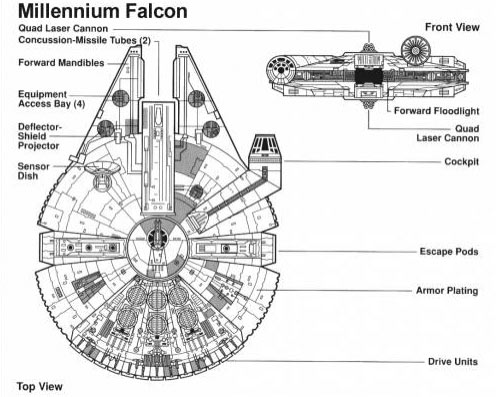
(via quips)
Ken Carbone redesigned three of the crappiest NFL helmets, those of the Tampa Bay Buccaneers, Washington Redskins, and New England Patriots.
Among the weakest designs are the Washington Redskins and Tampa Bay Buccaneers, whose visually complicated logos become a graphic mess when televised and, I imagine, even if you’re sitting on the fifty-yard line. At the very the bottom of the list are the New England Patriots. The Patriots’ helmet is plastered with their logo, which comes dangerously close to looking like a wind-swept John Kerry dressed up like a Minute Man.
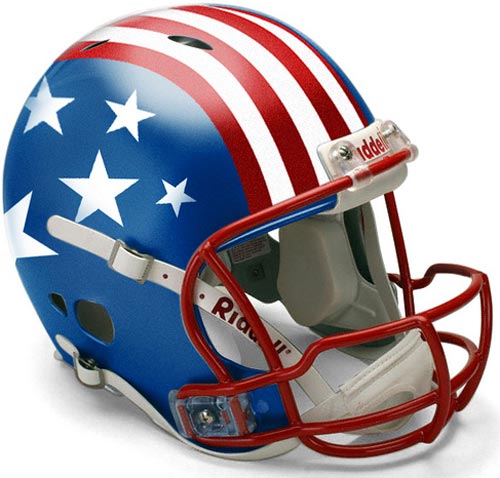
(thx, jason)
There are some tsarist Russia posters in the collection as well. (via do)
In addition to being a painter of some repute, Peter Paul Rubens was also a diplomat:
In Master of Shadows, Mark Lamster tells the story of Rubens’s life and brilliantly re-creates the culture, religious conflicts, and political intrigues of his time. Commissions to paint military and political leaders drew Rubens from his Antwerp home to London, Madrid, Paris, and Rome. The Spanish crown, recognizing the value of his easy access to figures of power, enlisted him into diplomatic service. His uncommon intelligence, preternatural charm, and ability to navigate through ever-shifting political winds allowed him to negotiate a long-sought peace treaty between England and Spain even as Europe’s shrewdest statesmen plotted against him.
and a graphic designer.
Moretus was Rubens’s most frequent design client. To save his friend money, Rubens generally did his work for Plantin on holidays, so he would not have to charge Moretus his rather exorbitant day rate (Rubens was notorious for his high prices), and even then he agreed to be paid in books.
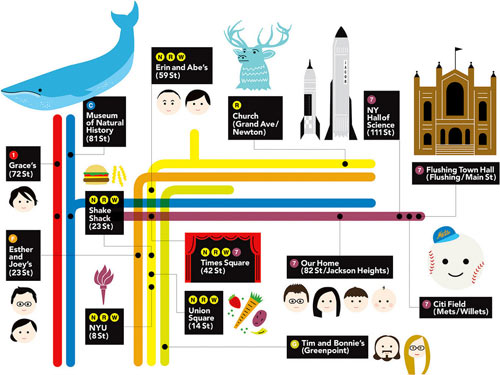
This was my present to my nephew for his 3rd birthday. He loves, loves, loves the subway so my sister asked me if I could make a custom map with all the places that mean something to him on the poster.
Best viewed a bit large.
Update: There’s been a bit of confusion…this is not something that I made. I don’t even have a nephew.
Update: The subway map was made by Erin Jang.
From alfabeto to zitoni, here are over 150 illustrations of pasta shapes, a visual pasta encyclopedia, if you will.
Hiding at the very end of the listing is a pasta shape called Marille, which is unusual in that a) it’s a recent shape, b) its designer is known, and c) it is no longer available. Marille’s designer, Giorgetto Giugiaro, previously had designed some of the most distinctive cars in the world and in 1999 was named Car Designer of the Century. (via @nicolatwilley)
Ted Kaye has compiled some advice for designing flags.
1. Keep it simple.
2. Use meaningful symbolism
3. Use 2-3 basic colors
4. No lettering or seals
5. Be distinctive or be related
In a nutshell:
The flag should be so simple that a child can draw it from memory.
The best flag in the world follows all of these rules.
Every seven years, Stefan Sagmeister closes his design studio for a year of focused R&D.
Every seven years, designer Stefan Sagmeister closes his New York studio for a yearlong sabbatical to rejuvenate and refresh their creative outlook. He explains the often overlooked value of time off and shows the innovative projects inspired by his time in Bali.
One of the finalists in the Roca’s bathroom-related design contest, Jump the gap, was Spanish design studio Yonoh’s “box.” It’s a self-contained, customizable modular bathroom that features enough room for a toilet, wash-basin, shower, seat, two shelves, a towel rack, and a section for extra space and storage. All of the faucets are electronic, with displays indicating the temperature and the amount of water consumed. This “box” requires hookups for water and electricity, and after water is used by the sink or the shower, it’s stored in a conservation-friendly water tank where it supplies the toilet. It remains to be seen if the eco-friendly “box” will compete with other cubic commodes. Regardless, it’s quite a leap from the Port-a-Potty.
Yu Hun Kim’s reading tray prevents coffee stains and crumb-filled spines. Part of a series called “Aids for Multi-Tasking,” the transparent, acrylic tray covers your magazine or book and features an indentation for your coffee mug. Imagine covering the surface in food and gradually eating your way through an article. But how do you turn a page?
PIG 05049 by Christien Meindertsma recently won the 2009 Index Award in the Play category. This book looks amazing.
05049 was an actual pig, raised and slaughtered on a commercial farm in the Netherlands. Rotterdam designer Christien Meindertsma was shocked to discover that she could document 185 products contributed to by the animal.
Meindertsma’s design includes the publication of her book, PIG 05049, which charts and pictures each of the products supported by the animal. The surprise is in the fact that elements of production contributed to by pig farming include not only predictable foodstuffs — pork chops and bacon — but far less expected non-food items: ammunition, train brakes, automobile paint, soap and washing powder, bone china, cigarettes.
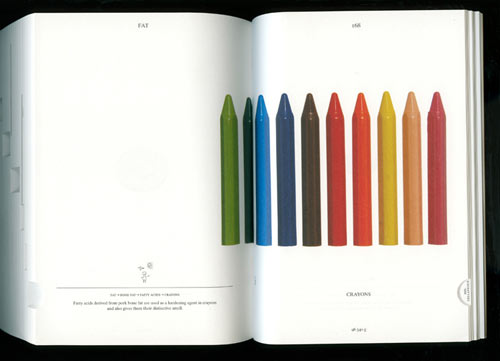
The caption on the page reads:
Fatty acids derived from pork bone fat are used as a hardening agent in crayons and also gives them their distinctive smell.
Crayons smell like pig bone fat. I don’t think I’ll use crayons ever again without thinking of that little factoid.
See also I, Pencil. Nobody knows how to make a pencil and nobody knows where all the parts of a pig go either. (via design observer)
Winners in the Michael Jackson Monument Design Competition have been announced. Evan Roth, a noted Michael Jackson enthusiast, came in first. I like the second place entry only slightly more:
A gold-plated wind turbine powers an interactively-lit dance floor and speaker system. Michael Jackson’s music plays day and night for the fans that congregate in these remote sand flats.
Hack 2 Work is a series of tips and tricks for designers from Core77. Looks good so far. Check out Liz Danzico’s How to Learn About Your Clients From Their Table Manners (to be taken with a grain of salt, I’m sure):
When the food arrives, does your client salt and pepper the food before he or she tastes it? If so, this is a clear sign that your client is potentially closed-minded, not open to new ideas, or set in his or her ways. If your client first tastes the food, and then adds salt or pepper, tremendous. This suggests your client has opinions, and is not afraid to exercise them-but only after the voice of the “creator” (in this case the chef) has been fairly given a chance first.
and How to Make Your Client’s Logo Bigger Without Making Their Logo Bigger from Michael Bierut:
Like all con games, this one is based on the illusion that the sucker has the advantage. In this case, it’s the conviction that this kind of client always has that it’s your job to do as they say. Little do they realize that your final allegiance is not to them, but to the quality of the work, something that you cannot in good conscience permit them to jeopardize with their lack of taste.
Update: James Grimmelmann shares his similar tip for lighting designers:
The lighting-designer version of this is to tell the director that yes, you can make the lights brighter, but you’ll need to turn off the power for a few minutes while you change some of the wiring. Turn everything off, wait fifteen minutes while the director’s eyes adjust to the dark, then turn everything back on. It sure does look brighter now, doesn’t it?
The influential design magazine Emigre stopped publishing issues back in 2005, but now they’re releasing issue No. 70, which is actually a hardcover book celebrating the best of Emigre from the past 25 years.
This book, designed and edited by Emigre co-founder and designer Rudy VanderLans, is a selection of reprints, using original digital files, tracing Emigre’s development from its early bitmap design days in the late 1980s through to the experimental layouts that defined the so called “Legibility Wars” of the late 1990s, to the critical design writing of the early 2000s.
(via quipsologies)
You know that image that’s been going around that shows several revisions to the Pepsi logo while the Coca-Cola logo is the same as it’s been since 1885? It tells a compelling story…Pepsi shifting its brand every few years in an attempt to catch up to steady market leader Coca-Cola. But of course it’s bullshit…Armin Vit constructs a more accurate brand timeline that shows many Coca-Cola logos over the years.
John Emerson has collected a number of design manifestos dating back to 1909.
Since the days of radical printer-pamphleteers, design and designers have a long history of fighting for what’s right and working to transform society. The rise of the literary form of the manifesto also parallels the rise of modernity and the spread of letterpress printing.
Using a link to his Twitter account from his blog, Dustin Curtis tested the effect of language on clickthrough rates.
Making the phrase more direct and personal by adding the words “you should” increased the clickthrough rate by 38% to 10.09%.
Curtis started out with “I’m on twitter” and eventually increased the clickthrough rate by more than double by changing the wording to “You should follow me on Twitter here.” (And Jesus, gorgeous site design too.)
The Typography Manual looks like a nice little iPhone app for designers.
The Typography Manual has several useful features and resources for designers, including a visual type anatomy glossary, a font size ruler, an em calculator, and a enough content to fill a 60 page book. It has the all the essentials of a desk reference in a regularly updated pocket resource.
(via quips)
Lettercult has a round-up of some notable “custom letters” from the first half of 2009…hand lettered type, calligraphy, sign painting, graffiti….stuff like that. This is one of my favorites:

(via do)
Flip Flop Fly Ball is a marriage of baseball fandom and an enthusiasm for infographics. While not strictly baseball, this comparison of the sizes and shapes of sports balls is a favorite.
Two recent projects that incorporate the experiences of map users into the subsequent versions of the maps:
1. For the Salone di Mobile event in Milan, The British Council commissioned a map of the event that would be augmented each day with information flowing in from Flickr, Twitter, blogs, and people’s physical scribbles on the maps.
One thing that’s very interesting to us that is using this rapidly-produced thing then becomes a ‘social object’: creating conversations, collecting scribbles, instigating adventures - which then get collected and redistributed.
More information about the project is available on The Incidental site.
2. Walking Maps, produced by Mike Migurski at Stamen, encourages people print out maps from OpenStreetMap, annotate them with missing information, and scan them back in.
In some places, participants are creating the first freely-available maps by GPS survey. In other places, such as the United States, basic roads exist, but lack local detail: locations of traffic signals, ATMs, caf’es, schools, parks, and shops. What such partially-mapped places need is not more GPS traces, but additional knowledge about what exists on and around the street. Walking Papers is made to help you easily create printed maps, mark them with things you know, and then share that knowledge with OpenStreetMap.
Never Use White Type on a Black Background.
Design has many rules that claim to be big truths and full of wisdom. Designers all go by rules that work for them. However, their rules may not work for someone else, or for a particular piece of design work. When a rule is forced upon you, it stops working and becomes a joke, like “Never use a PC,” or “Leave it until the last minute,” or the most famous of them all, “Less is more.” The problem is that every rule related to, or governing, design is ultimately ridiculous. In this book we have collected the most talked-about rules and the viewpoints of designers and thought leaders who live by them or hate them.
(via swissmiss)
This afternoon at 3pm ET, I will offering the commentary in a first round match of the 2009 Layer Tennis playoffs. The match features Aaron Draplin vs. Sam Potts and promises to be awesome. Come by and heckle. BTW, the morning match between Chris Glass and Greg Hubacek with commentary by Rosecrans Baldwin has already begun.
Marie Mundaca designed three of David Foster Wallace’s books (the insides, not the covers). The second one was challenging but rewarding.
Wallace’s idea was to have leaders and labels, like a diagram. He wanted something that looked like hypertext rollovers that were immediate and at hand. I thought this whole thing might be a bit much for me to design. It seemed like it might be a full-time job. I sent it off to one of my favorite designers, who shot me an email back saying something along the lines of “There is not enough money in the world to make me do this.”
The third was just plain tough.
Regarding the design of digital products, form doesn’t follow function anymore.
Thanks to digital technology, designers can squeeze so many functions into such tiny containers that there is more computing power in a basic cellphone (not a fancy model, like a BlackBerry or iPhone, just a cheap one) than at NASA’s headquarters when it began in 1958. That is why the appearance of most digital products bears no relation to what they do.
I’ve heard this idea expressed before, specifically about the iPhone, but I can’t remember where. Maybe it was Rawsthorn herself in Objectified?
Newer posts
Older posts










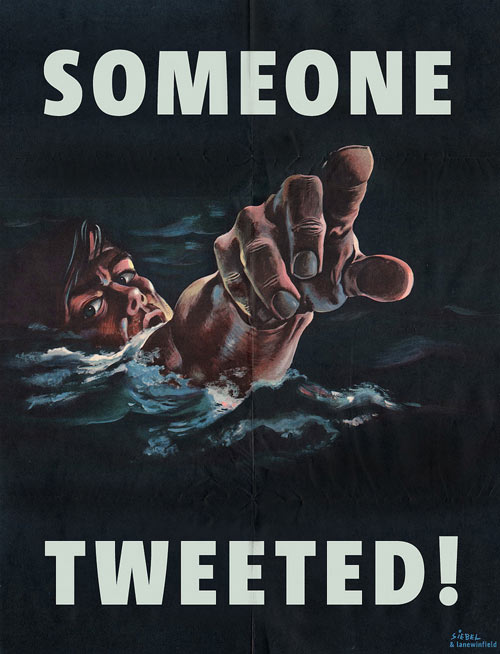
Stay Connected